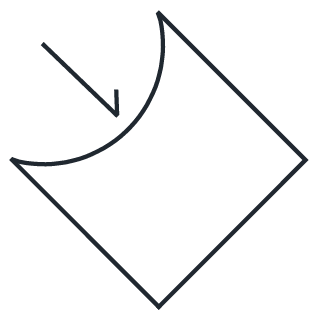Technical Campus Blue Gate
The brownfield site “Petroleum Zuid” to the south of Antwerp is being developed into a sustainable business park called Blue Gate. Besides the commercial component, the plans include the provision of a green corridor and public facilities. As part of the latter, a new building at the far corner of the development is to incorporate two vocational schools: one of them (WLAZ) offers practice-based secondary education in a work/learn program, the other (ENCORA) teaches vocational skills to adults. The mixing of students from different backgrounds and the proximity to future employers should make this institute into an ideal springboard for students’ careers.
As the buildable plot area is limited the brief prescribes a vertical stacking of the different workshop and studio spaces. This makes for an intriguing yet challenging layout: these semi-industrial spaces have to comply with a plethora of strict health and safety regulations and technical specifications which become exponentially more complicated by locating them on upper floors. As a consequence, POLO conceives this building as more than just a school; we consider it a kind of “vertical factory”, where the safe and efficient functioning of the work spaces becomes an overriding concern and determinant factor in the design process.
Creative encounters
The building plan is based around a staggered layout of rectangles in order to accommodate the parallelogram-shaped plot. The two main blocks containing the workshops and classrooms are linked by a central circulation core, which is to be the throbbing heart of the building. Here a spacious freight elevator serves the different workshops — large enough to transport raw materials, tools and even forklifts to the upstairs training spaces.
The teaching and practice spaces are industrial in character, left raw and unfinished for budgetary as well as practical reasons — commensurate with the rough and tumble nature of the activities taking place inside. Concrete block walls are left bare and unpainted while mechanical and electrical systems are exposed in order to be easily replaced or extended as requirements change.
We reserve the more refined interior treatments for the public areas such as the entrance lobby, stairs and corridors. Here the walls are rendered and painted; we use wood for a warmer, welcoming feeling in the reception desk, skirting boards and window frames; we employ bold typographies for floor numbers and colourful accents for balustrades.
It is in these common areas that refreshing and stimulating interactions between the students of the different schools (and different age groups) could take place. In our design we seek to encourage these unplanned encounters through the location and treatment of circulation spaces and the placement of (internal) windows providing visual links across the different wings of the buildings and between classrooms and workshops.
This idea of collectivity and communication culminates in the “Living Room” on the top floor, where a canteen and a generous balcony offer expansive views of the city, the river and the green surroundings.
An integrated approach
The design of the school is driven forward by technical problem solving and the creative application of our engineers’ expertise. As architects our role is to seek innovative solutions for the unpredictable problems this “vertical factory” layout throws up: we push our consultants out of their comfort zone to realise a design that is spatially interesting and functionally efficient while staying within the constraints of a limited budget.
The reinforced concrete structure is calculated to incorporate not only the demands and risks associated with the current building program; it is also dimensioned to accommodate other, more structurally demanding functions, ensuring that this design is future-proof and forwardly flexible.
In a demanding process such as this, BIM becomes an invaluable tool. By integrating all the different components of the design into one three-dimensional model, we manage to anticipate site issues and compile construction drawings which are a close reflection of the eventual built reality. By getting the contractor on board with this BIM-process we guarantee a project trajectory that is as seamless as possible, with a smooth transition from design into construction phases.
A subtle yet robust presence
In keeping with the industrial nature of the business park as well as the school’s vocational training program, the building is clad in profiled aluminium sheets in a standing seam system. The sharp geometric nature of this material is softened by perforations. This adds a sophisticated lightness and a variability in appearance, determined by the changes in daylight. It also allows concealing air grilles and other mechanical equipment behind the cladding, keeping the external appearance of the building smooth and devoid of clutter. The building is insulated using mineral wool, which presents a more durable and fireproof solution compared to thinner PIR-panels.
To an extent the building programme is readable in the elevations. Horizontal ribbon windows are provided where classrooms are located. The workshops receive floor to ceiling glazing, delivering an abundance of daylight for the manual labour taking place within.
At ground level only a small area is fenced off, a concession to the security requirements of the school and the safeguarding of the raw materials and expensive equipment on site. Likewise, only a limited surface area is paved for specific purposes such as forklift practice. The rest of the public domain on the plot is landscaped and seamlessly integrated with the green belt nearby, which connects the park areas around Antwerp’s ring road with the nature reserve of the Hobokense Polder nearby.





















